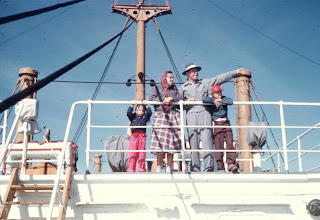 Father Yang's arrest brings me sadness because I know him personally, if even for a very short time. I have seen his humble grace and gentle humor. I know of his humanity and commitment to social justice. He opened doors for my work in Korea by supplying invaluable contacts.
Father Yang's arrest brings me sadness because I know him personally, if even for a very short time. I have seen his humble grace and gentle humor. I know of his humanity and commitment to social justice. He opened doors for my work in Korea by supplying invaluable contacts.Supporters say the base is needed to protect south Korea, Japan, and other Asian nations from the military threat posed by north Korea and possibly China. Opponents say that military escalation and destruction of the environment are counterproductive to world peace.
 It seems that my own life has been punctuated by war and protests against war and social injustice. Some will say that the end justifies the means. I personally cannot see it.
It seems that my own life has been punctuated by war and protests against war and social injustice. Some will say that the end justifies the means. I personally cannot see it.I was born during the first year of the Korean War and grew up in post-war south Korea only to return to the United States in time for the Viet Nam War. In both countries I was witness to, or took part in, protests, even riots. After college I returned to Korea in the Peace Corps and witnessed the military dictatorship and oppression of the Park Chung-hee regime. During that time a dear family friend, Geoge Ogle, was deported from Korea for the crime of praying for the prisoners, those who reportedly opposed the government. Shortly after George's departure I visited his family only to win my own two Korean secret service minders. It was also during my Peace Corps years that I visited Saigon where the ongoing war could still be heard in the distance and the beggars and the maimed bore witness in the streets. Back in the U.S. again I watched in horror as many innocent Chinese lost their lives in Tiananmen square.
After I was married I moved to Panama with my husband, only to again be caught up in riots, coup attempts, and political upheaval that necessitated our return to the United States. It was during that time that through my own experiences and those of my Panamanian family, the lies and propaganda of our own government were truly exposed to me. There was a stark contrast between the reports available in the United States and the first-hand accounts and photographs provided by family.
Since then we have been involved in wars in the middle east and Afghanistan.
I have not been physically present for these later wars, but through my work caring for refugees from Laos, Somalia, Ethiopia, and other countries impacted by war, I have heard the stories and seen the anguish of the mother separated from her children with no idea if they are alive or dead. I have seen the victim of rape, paralyzed both physically and emotionally by her torture. I have seen the devastation of post traumatic stress disorder and of physical conditions that have gone undiagnosed and untreated for too long, destroying young lives.
Regardless of the arguments for military escalation, military intervention, military bases; I have a gut reaction based on my personal experiences and observations and fueled by my Christian upbringing. My gut say NO MORE in capital letters. Life should be punctuated by the joys of welcoming a new baby, by relationships, by the grief of losing a loved one who has lived a good life and is ready to move on, not by the anguish and devastation of war. We should not destroy the beauty of God's creation by war and preparation for war.
PRAY FOR THE PRISONERS WHO ARE BRAVE ENOUGH TO STAND FOR THEIR BELIEFS AND FOR THE PEOPLE THEY ARE TRYING TO PROTECT






.JPG)











